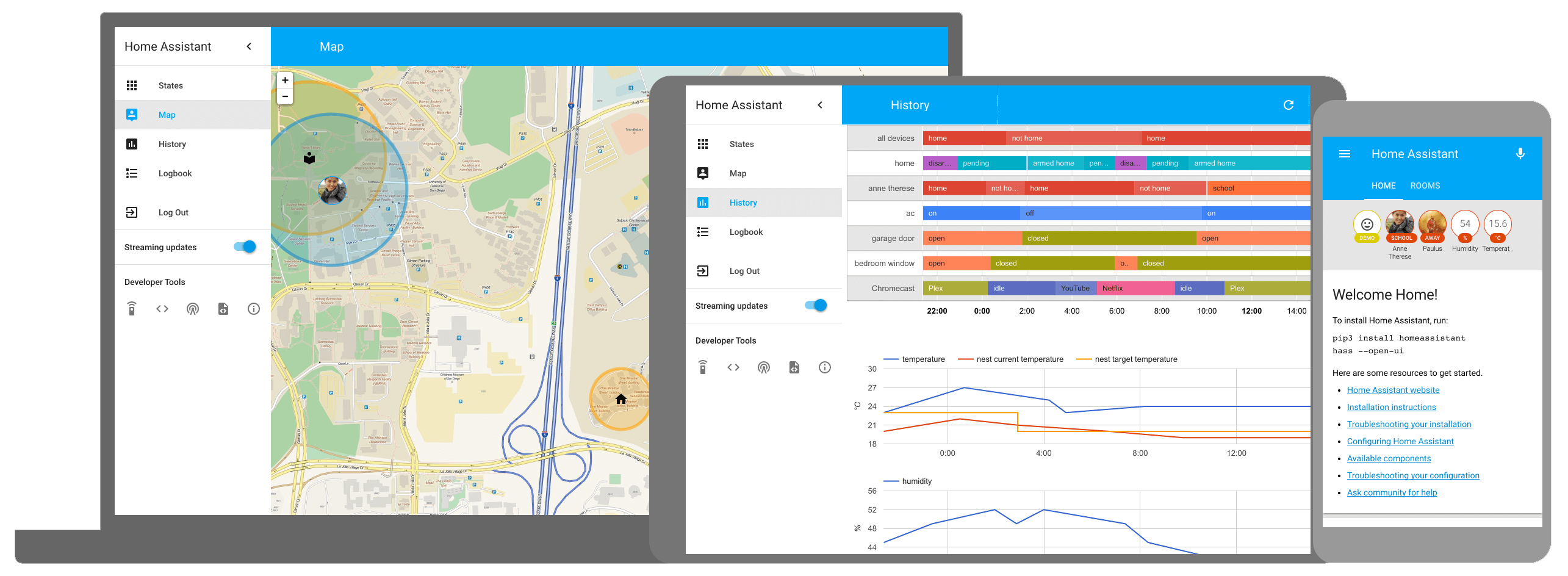Frontend of Home Assistant
The Home Assistant frontend integration provides the graphical user interface that allows you to browse and control the state of your house, manage automations, and configure integrations.

Home Assistant comes with a default dashboard. But you can also create and customize your own dashboards.
Creating and styling your own dashboards
To learn how to create and style your own dashboards, refer to the following topics:
Organizing and filtering data
To learn how to organize and filter your data on an existing dashboard, refer to the following topics:
User- or browser-dependent settings, general settings
User- or browser-dependent settings
Some of the frontend settings depend on the user. Other settings can be set by client. This allows you for example to have different languages per user, and a different theme depending on the device that is used to display Home Assistant.
To change these settings, in the bottom left, select your username to open your User profile.
- To change general settings such as language, number and time format, go to the User settings.
- To change browser dependent settings such as the theme, default dashboard, or whether or not to show the sidebar, change the Browser settings.
Themes
Themes can be set per browser. In the User profile, you can define some theme settings, such as whether you want a light or dark theme. However, more detailed theme settings require YAML configuration. Refer to the documentation of the frontend integration.
General settings
Some of the settings, such as location and currency, were defined during the onboarding process. They can be changed under Settings > System > General. Refer to the documentation on setup basic information.
Apps for Android and iOS
If you are looking for information on Home Assistant for Android or iOS, refer to the documentation for the Companion Apps.